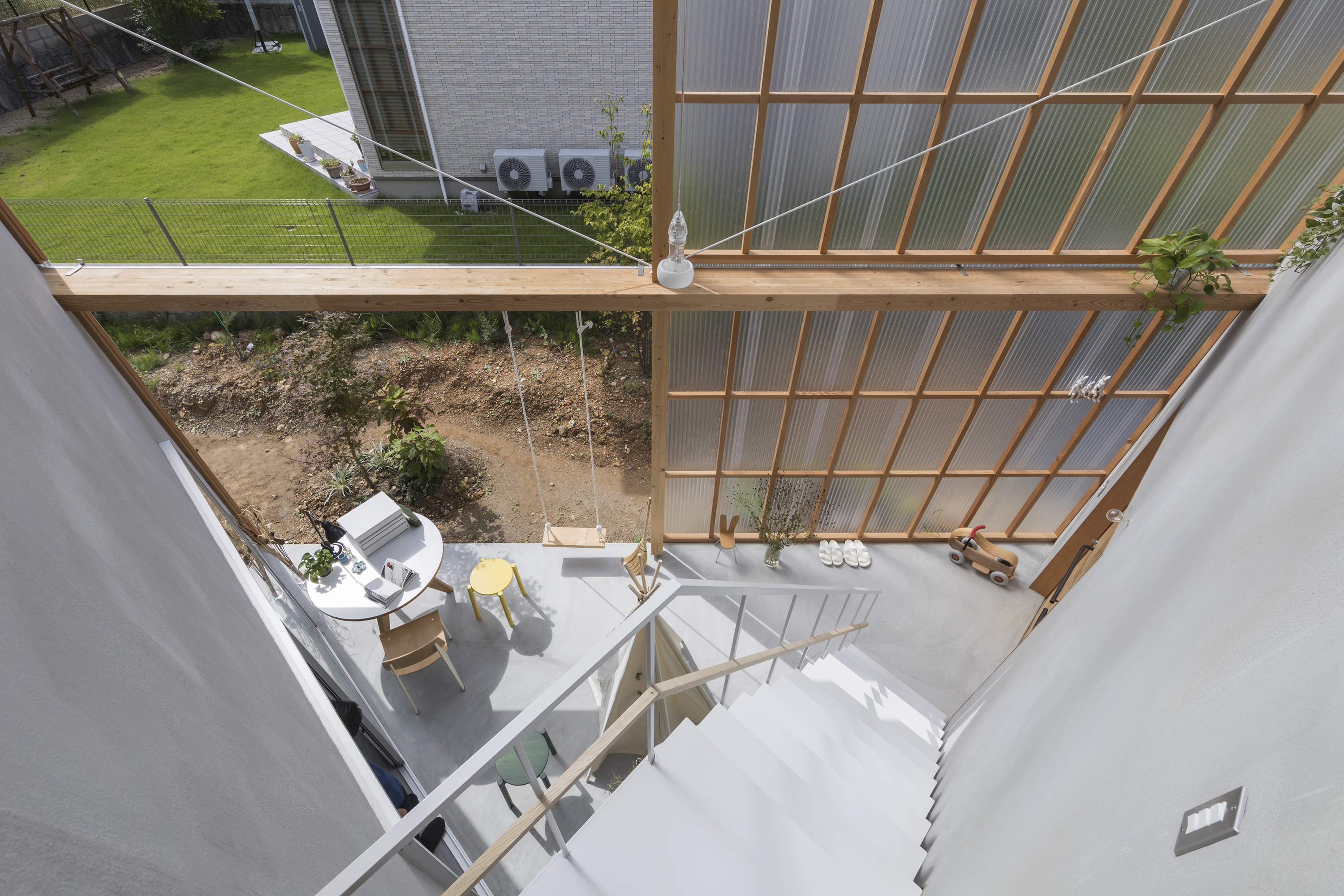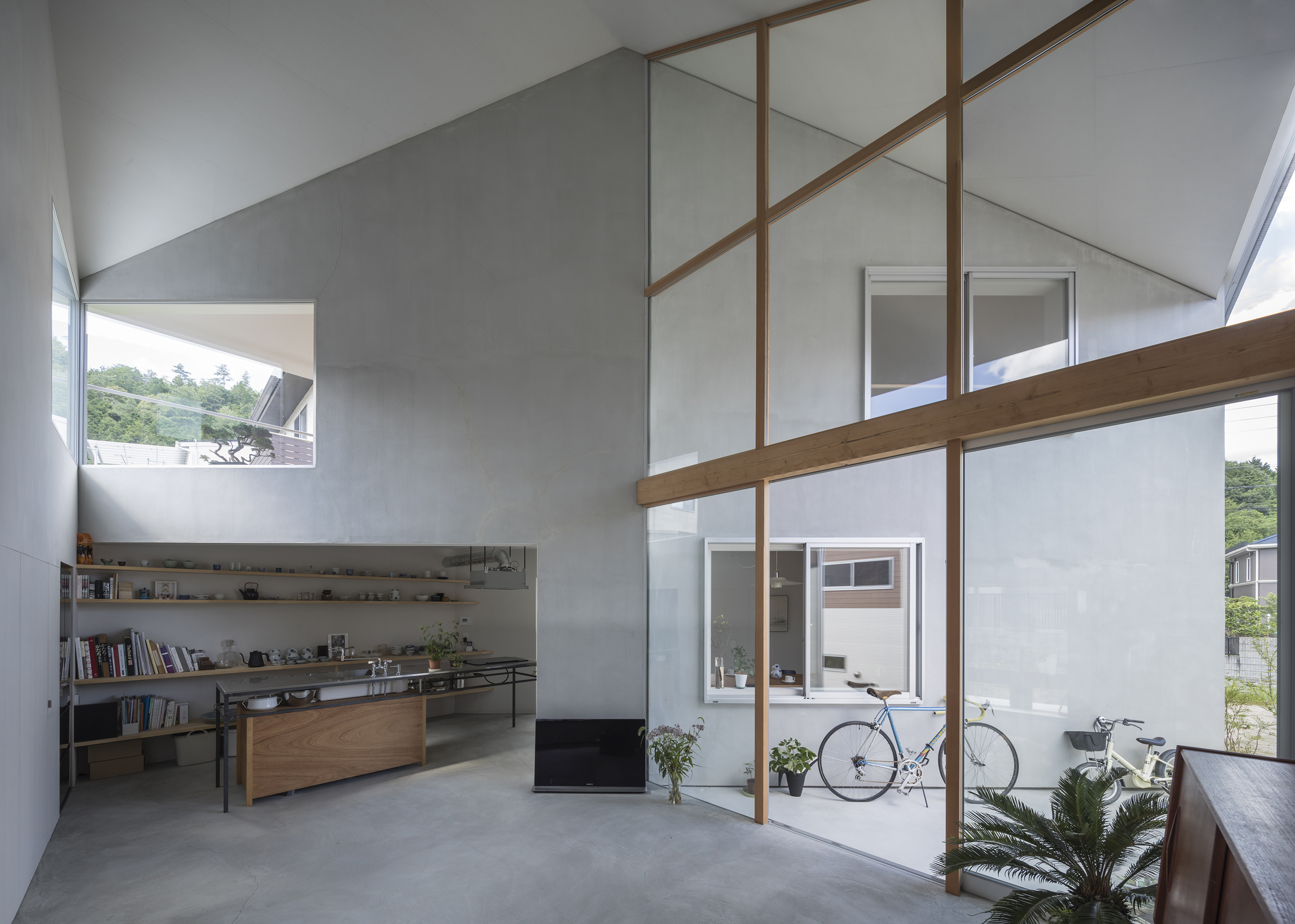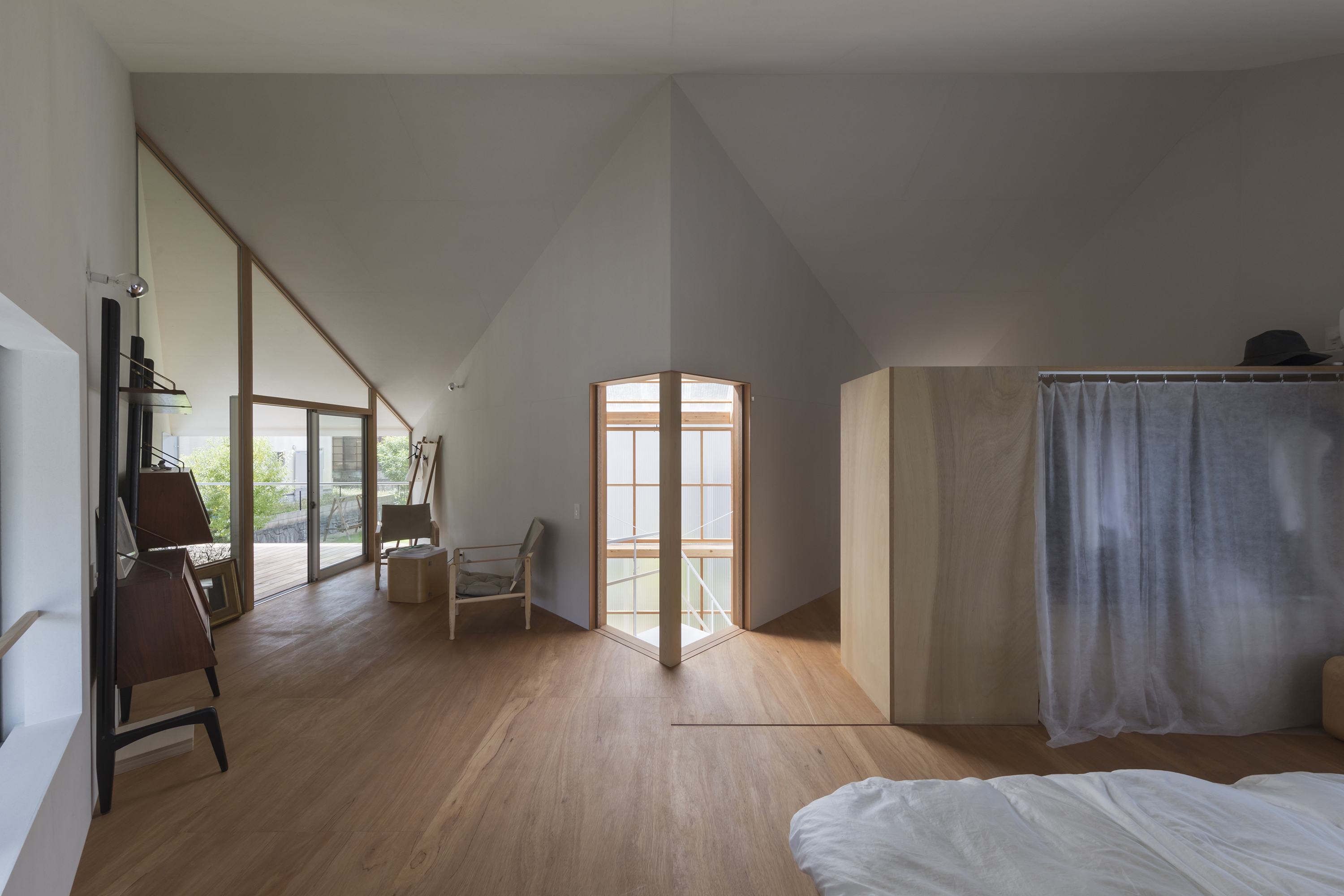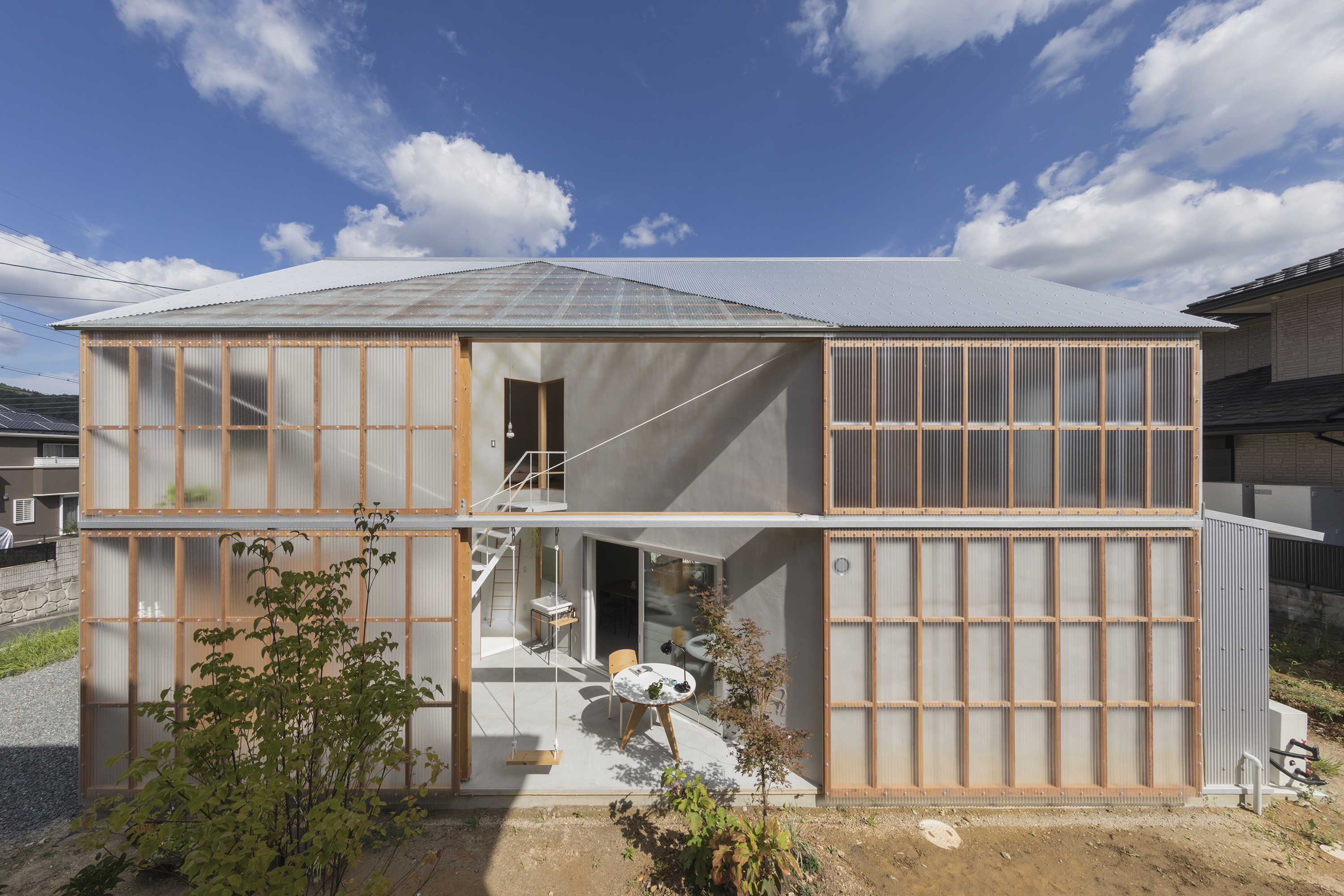The Semi-Outdoor House in Sonobe by Tato Architects
Through a subtle interplay between walls, this building shakes up points of reference and conventions in terms of interior and exterior.

© Shinkenchiku Sha
In 2017, the architectural firm Tato Architects, founded by Yo Shimada, built a single-family house in the city of Natan, previously named Sonobe, in Kyoto Prefecture. Covering an area of 300 square metres, the residence stands out from the other identical lots in the residential district due to its unconventional configuration.
Based in his city of birth, Kobe, the architect, who graduated from Kyoto City University of Arts (KCUA) in 1997, wishes to revolutionise the world of design. A non-conformist, his philosophy is rooted in respect and appreciation for nature. Architecture and the environment need to coexist peacefully rather than by force.
Reinventing the veranda, a typical feature of the region
The House in Sonobe is located in a mountainous region with a cool, moist climate. As a result, it is customary for many of the residences to have a modest annex similar to a veranda. In winter, this improvised enclosure serves as a storehouse and a place for drying laundry.
Tato Architects drew inspiration from this local phenomenon when designing the main entrance to the house. A wooden swing suspended from a steel girder, a sink, a workspace… This wedge-shaped atrium becomes the most used space in the home as it can transform into an open courtyard connected to the garden. With the aid of removable panels made from corrugated polycarbonate, the south façade becomes a boundary between the private and public spaces. Mounted on thin visible wooden frames, these sliding modules spread over two floors make it possible to transform the appearance and layout of the interior.
Inside the residence that covers over 120 square metres, the bright rooms are labyrinthine. By means of a diagonal sweep with partitions inclined at a 45-degree angle, a variety of functional areas, some of which are semi-open, are available to the tenants. This sense of disorientation allows these minimalist landscapes to develop in a natural way.
House in Sonobe (2017), a project by architectural firm Tato Architects, can be viewed on their website.

© Shinkenchiku Sha

© Shinkenchiku Sha

© Shinkenchiku Sha

© Shinkenchiku Sha
TRENDING
-
The Tattoos that Marked the Criminals of the Edo Period
Traditional tattoos were strong signifiers; murderers had head tattoos, while theft might result in an arm tattoo.

-
Chiharu Shiota, Red Threads of the Soul
Last year, more than 660,000 people visited the retrospective 'Chiharu Shiota: The Soul Trembles' exhibit at the Mori Art Museum.

-
‘Before Doubting Others, Doubt Yourself. Who Can Truly Say a Dish Isn’t What It Used to Be?’
In ‘A Non-Conformist’s Guide to Surviving Society’, author Satoshi Ogawa shares his strategies for navigating everyday life.

-
The Story of Sada Yacco, the Geisha who Bewitched Europe
Described by Dazed magazine as the first beauty influencer, she has been restored to her former glory since 2019.

-
Ito Jakuchu's Naturalist Paintings
From 15 September until 14 October 2018, the Petit Palais showcased the artist's iconic ‘Images of the Colourful Realm of Living Beings’.





